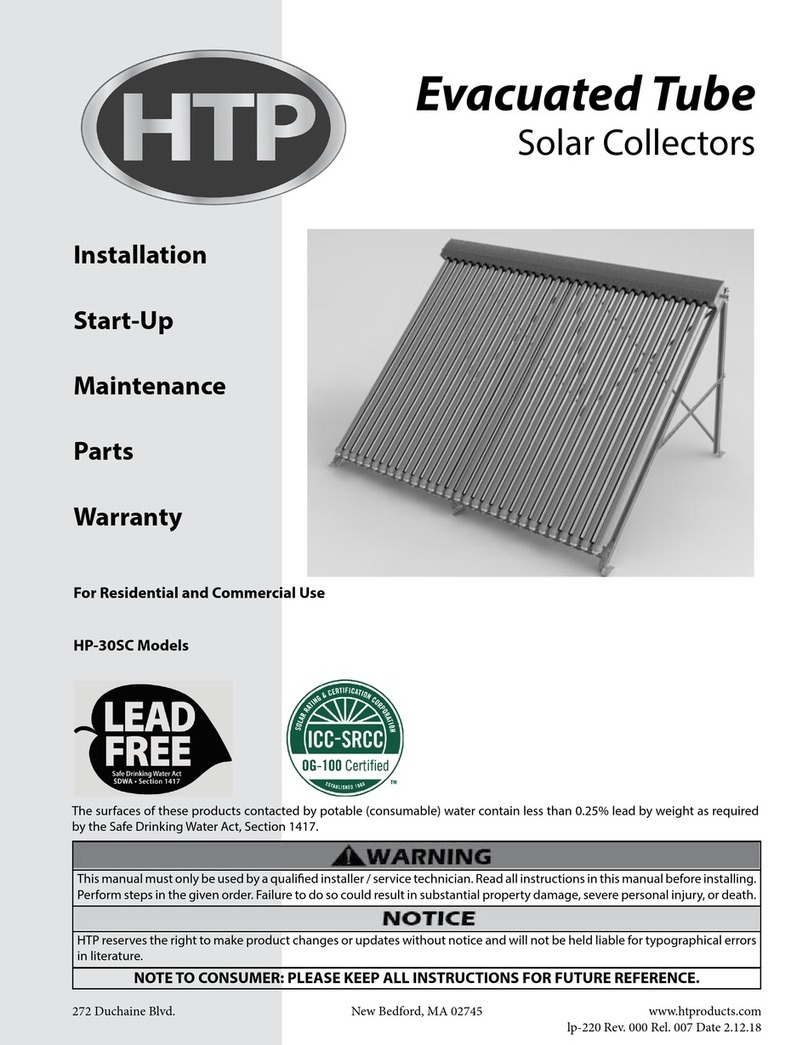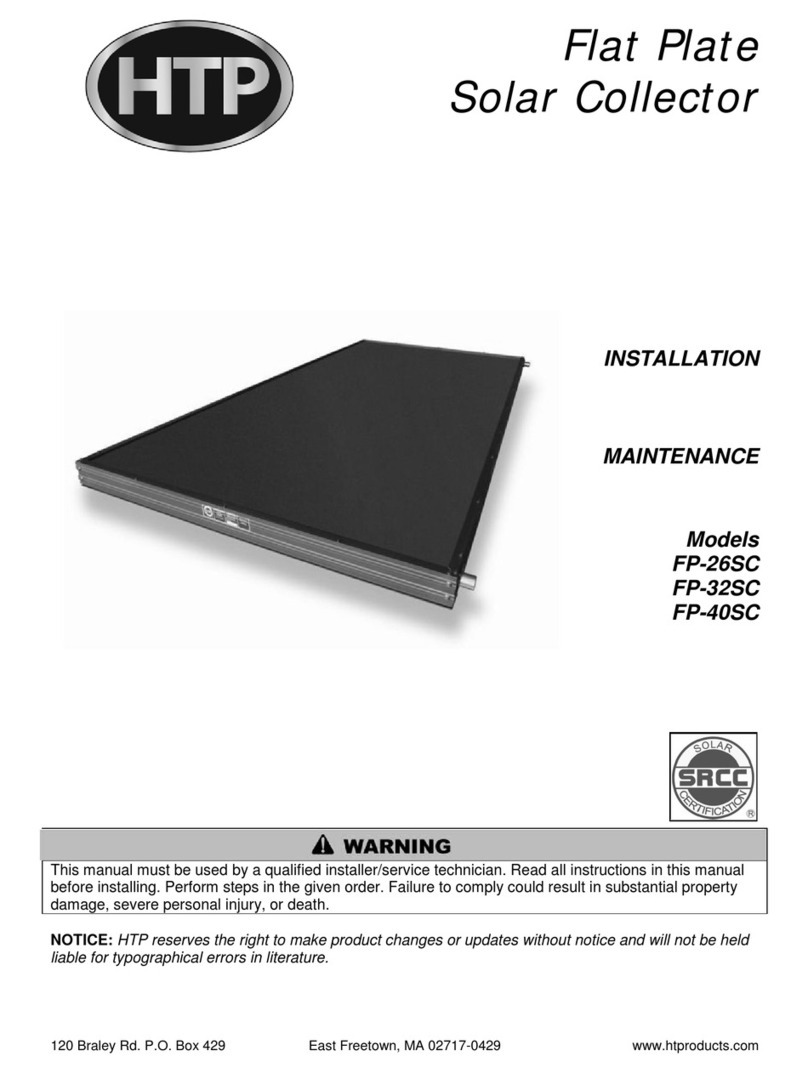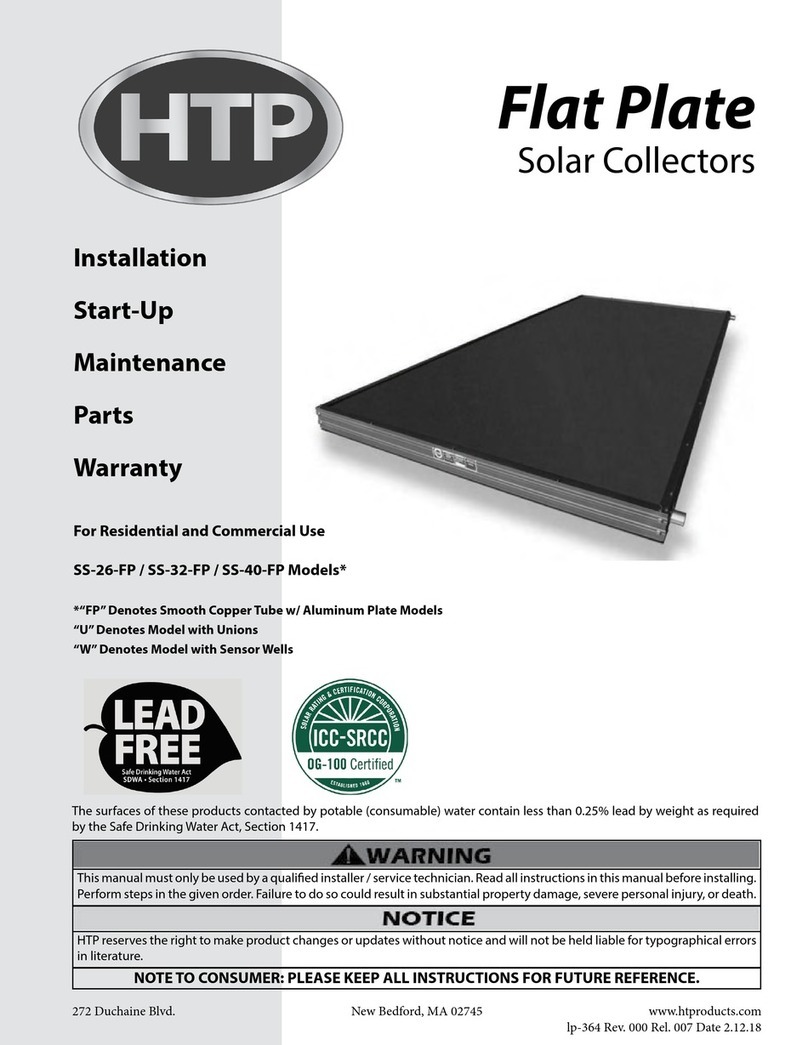
4
TABLE OF CONTENTS
INTRODUCTION...........................................................................................................................................7
ABOUT YOUR EVACUATED TUBE SOLAR COLLECTOR ..................................................................7
PART 1: GENERAL SAFETY INFORMATION............................................................................................7
A. METALLIC COMPONENTS .................................................................................................................7
B. EVACUATED TUBES...........................................................................................................................7
C. HIGH TEMPERATURES......................................................................................................................8
D. HEALTH AND SAFETY........................................................................................................................8
PART 2: IMPORTANT INFORMATION .......................................................................................................9
A. SCOPE OF MANUAL...........................................................................................................................9
B. LOCAL STANDARDS...........................................................................................................................9
C. AUTHORIZED PERSONS....................................................................................................................9
D. TERMINOLOGY...................................................................................................................................9
E. POSSIBLE SYSTEM DESIGNS...........................................................................................................9
1. OPEN LOOP SYSTEMS...................................................................................................................9
2. CLOSED LOOP SYSTEMS..............................................................................................................9
3. DRAIN BACK SYSTEMS................................................................................................................10
F. FLUID QUALITY.................................................................................................................................10
G. METALLIC CORROSION...................................................................................................................10
H. FREEZE PROTECTION.....................................................................................................................11
I. COLLECTOR DIMENSIONS & WEIGHTS..........................................................................................11
J. WIND STRESS ...................................................................................................................................11
K. SNOW LOAD......................................................................................................................................12
L. STORAGE TANKS..............................................................................................................................12
M. HAIL RESISTANCE...........................................................................................................................12
PART 3: INSTALLATION INFORMATION................................................................................................12
A. TRANSPORT, UNPACKING, AND INSPECTION .............................................................................12
1. COMPONENT LIST ........................................................................................................................12
2. TUBE AND HEAT PIPE INSPECTION...........................................................................................14
B. SYSTEM DESIGN..............................................................................................................................15
C. DELTA-T CONTROLLER SETTINGS................................................................................................15
D. STAGNATION AND OVERHEATING................................................................................................15
E. CORRECT SYSTEM SIZING TO AVOID OVERHEATING ...............................................................15
F. SOLAR FOR CENTRAL HEATING – PREVENTING OVERHEATING .............................................16
G. COLLECTOR ANGLE, PLANE, AND DIRECTION............................................................................16






























